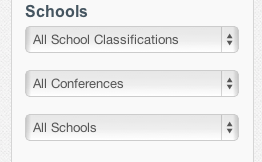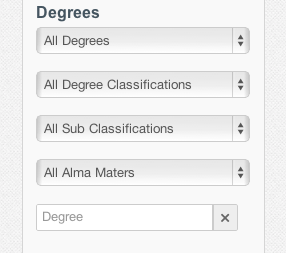Though job postings often return a mountain of candidates, those candidates are not assured to be qualified for the position they’re applying. The effects of this reality can often lead to important positions going unfilled, more work for others in the department, a tapering off of new candidates as the job post ages, frustration for internal candidates, and settling for less desirable hires.
Passive candidates. Almost mythical in the eyes of human resource professionals—they’re also the object of employer fantasy. Far from passive these potential team members are 120% more likely to want to have a meaningful impact in their work. Passive candidates are also 33% more desirous of stimulating and demanding labor than actively searching candidates, 17% less liable to need further skill development, and 21% less likely to necessitate excessive recognition. [1]
Many academic human resources personnel realize that the process of hiring passive candidates is more about building long term relationships than the transactional communications with active job seekers. But in tangible, concrete terms, how do academic human resource professionals go about finding (and hiring) these candidates that make up 79% of the workforce, but remain difficult to source?
HigherEdPeople.com provides human resource professionals a tremendous array of information about administrators in academia—47,000 easily searchable profiles. Searches by position type can be refined to reflect compensation, degree held, institution, and alma mater.
Higher Ed People provides contact information and social profiles for all candidates but also the information that often can’t be gleaned from networking sites or those with limited or protected online presences. Here’s how to source passive candidates during a job search with HEP:
- If one has identified a potential candidate simply type their name into the Name box on the left side of the screen.
- If one knows the institution that employs them, use the All Schools drop-down menu to find the college.
- If one hasn’t identified a candidate it’s easy to search by position. To zero in on a specific position choose a division (such as academic affairs or IT), and then search for the department within that division in the drop-down menu below.
- Easily set minimum and maximum salary limits with the Compensation drop-down menu.
- You can further hone your search by specifying degree type and alma mater.
- The HEP database also provides assistance for equal employment opportunity compliance with the ability to search for candidates by diversity and gender information.
- Just click update to call up a list of candidates that meet your specifications. A useful breakdown of important candidate information is provided by hovering the mouse over a name.
Once one has identified a candidate, click Full Profile for a comprehensive set of information that provides current title; contact information; degrees (including institution, level of attainment); social networking profiles (LinkedIn, Twitter, Facebook, etc); gender and diversity; compensation with a .pdf view of the contract; and region.
Additionally helpful is the automatically generated list of comparable candidates at other institutions and coworkers. With a detailed view of a candidate’s background it’s easier to connect and to build a relationship than unproductively presenting a job description to someone who perhaps hasn’t fully considered the possibility of a new position yet. With a clear picture of a prospective employee’s present situation, it’s not difficult to imagine what might make them consider a change.
Having access to a list of coworkers and social profiles also makes referrals easier. A study by Silkroad that examined 9.3 million applicants and 94,155 hires found that external (43%) and internal sources (46.7%) result in roughly the same number of interviews. 1 For actual hiring, however 63% of hires came from internal sources versus only 27% from external sources. Access to information is the key to finding and hiring top talent, and Higer Ed People offers the most information at the most reasonable price.






